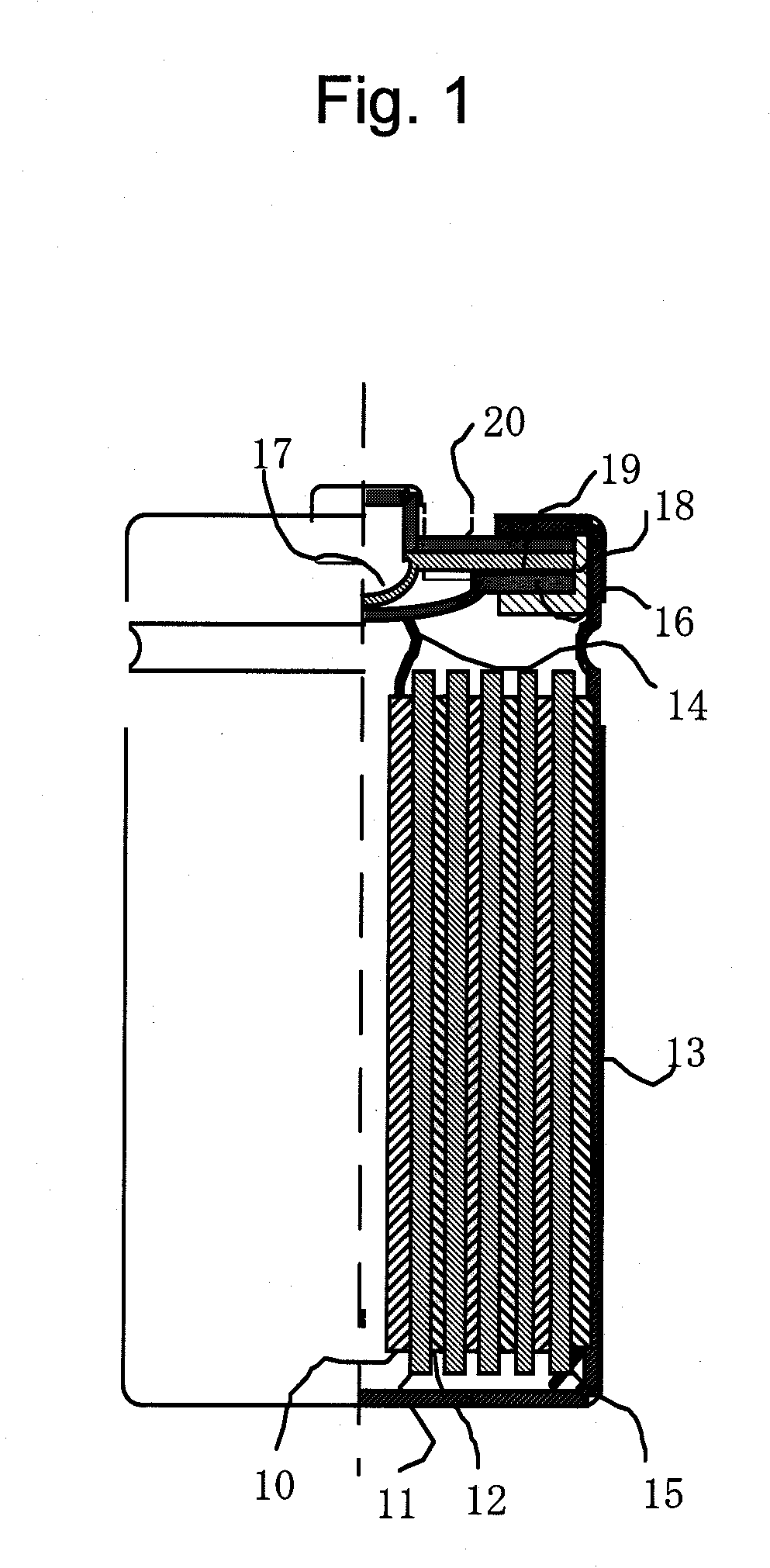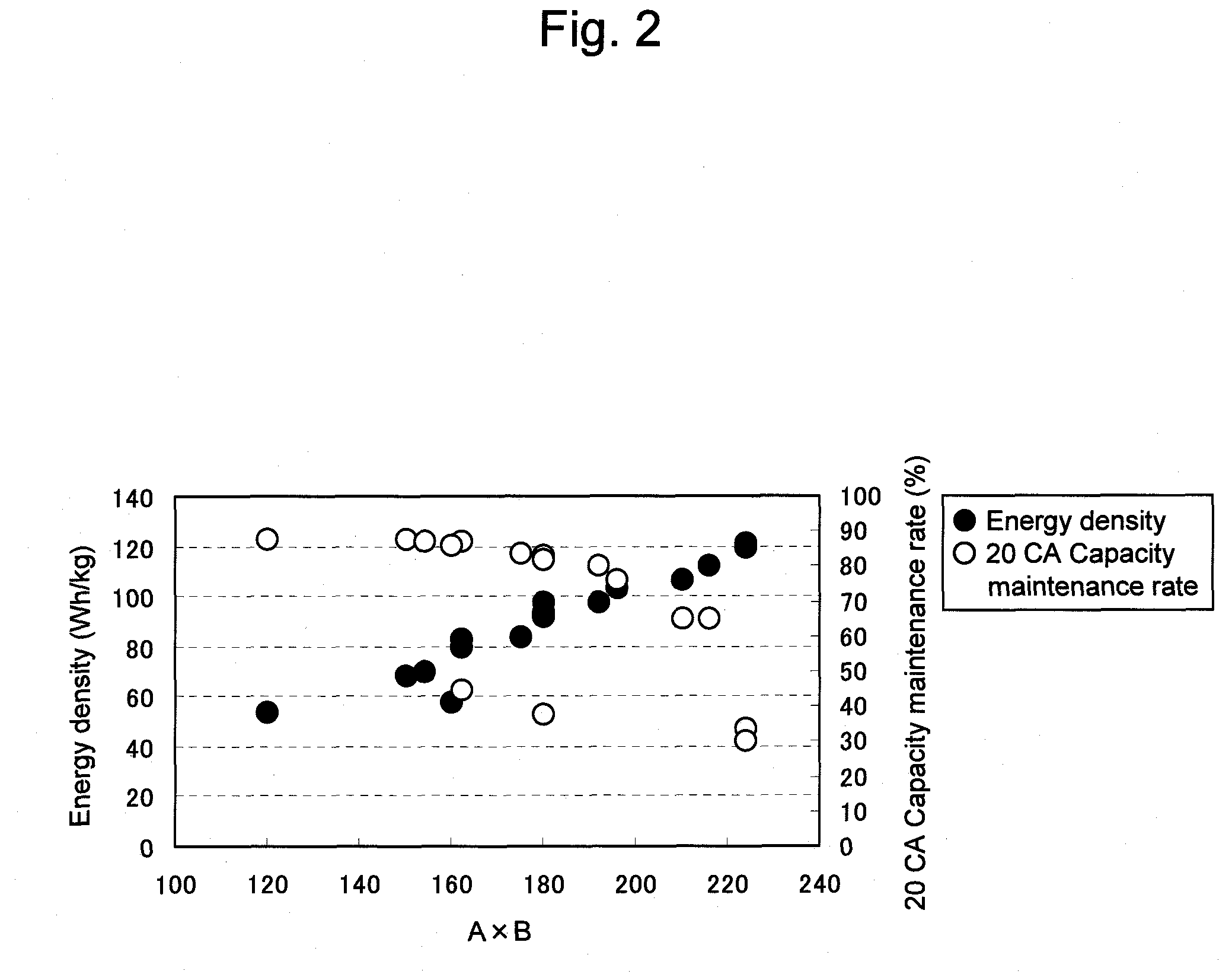Lithium ion battery
a technology of lithium ion batteries and ion batteries, which is applied in the direction of cell components, electrochemical generators, transportation and packaging, etc., can solve the problems of not providing any solution for overcoming the degradation of properties at large current, and achieve high energy density, large current, and satisfactory properties.
- Summary
- Abstract
- Description
- Claims
- Application Information
AI Technical Summary
Benefits of technology
Problems solved by technology
Method used
Image
Examples
example 1
[0065]A negative electrode active material was synthesized according to the following procedures. First, by using an autoclave, a coal tar from coal was heat treated at 400° C. to yield a green coke. The green coke was pulverized, and then calcined at 2800° C. in an inert atmosphere to yield graphite having a graphite interlayer distance (d200) of 0.3350 nm. The graphite was pulverized with an impact disintegrator equipped with a classifier, and then coarse powder was removed with a 300-mesh sieve to yield graphite particles. In this case, the average particle size was found to be 17.2 μm and the specific surface area was found to be 1.6 m2 / g.
[0066]Successively, a positive electrode active material was synthesized according to the following procedures. As raw materials, nickel oxide, manganese oxide and cobalt oxide were used and were weighed out so as for the atomic ratio of Ni:Mn:Co to be 1:1:1, and were pulverized and mixed together with a wet pulverizer. Next, as a binder, polyv...
example 2
[0075]A lithium ion battery was prepared in the same manner as in Example 1 except that the thickness of the positive electrode mixture layer was set at 60 μm and the product A×B between the thickness A and the density B of the mixture layer was altered to 180, and the energy density (Wh / kg) and the 20 CA capacity maintenance rate were obtained. The results thus obtained are shown in Table 1 and FIG. 2.
example 3
[0076]A lithium ion battery was prepared in the same manner as in Example 1 except that the thickness of the positive electrode mixture layer was set at 60 μm and the product A×B between the thickness A and the density B of the mixture layer was altered to 162, and the energy density (Wh / kg) and the 20 CA capacity maintenance rate were obtained. The results thus obtained are shown in Table 1 and FIG. 2.
PUM
| Property | Measurement | Unit |
|---|---|---|
| interlayer distance | aaaaa | aaaaa |
| interlayer distance | aaaaa | aaaaa |
| interlayer distance | aaaaa | aaaaa |
Abstract
Description
Claims
Application Information
 Login to View More
Login to View More - R&D
- Intellectual Property
- Life Sciences
- Materials
- Tech Scout
- Unparalleled Data Quality
- Higher Quality Content
- 60% Fewer Hallucinations
Browse by: Latest US Patents, China's latest patents, Technical Efficacy Thesaurus, Application Domain, Technology Topic, Popular Technical Reports.
© 2025 PatSnap. All rights reserved.Legal|Privacy policy|Modern Slavery Act Transparency Statement|Sitemap|About US| Contact US: help@patsnap.com



